EASA Annual Safety Review 2017 Published
The European Aviation Safety Agency (EASA) Annual Safety Review for 2017 is now available.
In the introduction to the Agency’s 12th review, EASA’s Executive Director Patrick Ky says:
2016 has brought continued improvements in safety across almost every operational domain. It was the lowest year in terms of fatalities in airline operations in aviation history.
However, the fatal accident involving a cargo flight in Sweden that took place in January highlighted the complex nature of aviation safety and the significance of addressing human factor aspects in further reducing accidents. Additionally, the tragic accident involving an EC225 helicopter in Norway in April 2016 shows the importance of joining forces and together maintaining safety as an aviation community.
During the past year EASA has advanced and developed key strategic activities across a diverse range of new and emerging issues.
…the Agency has further refined the way in which it applies Safety Risk Management principles. In particular, the collaborative analysis groups…in further underpinning a data-driven approach to managing safety, which is now also reflected in the latest edition of the European Plan for Aviation Safety (EPAS). These various efforts will help to ensure our continued vigilance and help improve safety for today and into the future.
EASA says:
The latest edition further extends the provision of safety risk portfolios through the addition of aerodromes/ground handling and ATM/ANS portfolios, bringing the total number of analysed aviation domains to 13.
Overview of Air Accidents in EASA Member States
EASA that in the 32 EASA Member States (the 28 European Union Member States plus Iceland, Liechtenstein, Norway and Switzerland):
The only domain with an increase in fatalities in 2016 was Offshore Helicopters, where there was one accident with 13 fatalities. This is the first year that a fatal accident has been recorded in this domain since 2013. For the other domains, there has been a reduction in both the number of fatal accidents and fatalities. Because of the low number of fatal accidents in CAT [Commercial Air Transport] Aeroplanes, the median average is introduced to highlight that while the mean average number of fatalities is high, this is largely due to a small number of large accidents.
The top 5 domains in terms of the number of fatalities for the past 10 years (2007-2016) were:
Non-Commercial Aeroplanes: In terms of the average number of fatalities over the past 10 years, this domain has the highest with 173.5. In 2016, it was also the domain with the highest number of fatalities and fatal accidents, being 113 fatalities and 77 fatal accidents. In both cases, the figures for 2016 are lower than the 10 year average. [Note: the discrepancy between this text and the table has been reported and is expected to be corrected shortly]
CAT Aeroplanes Airline (Passenger/Cargo): The second highest average number of fatalities over the past 10 years is in CAT Aeroplanes Airline (Passenger/ Cargo) with 66.0 per year. In 2016, there was one fatal accident, which led to 2 fatalities. This accident involved West Air Sweden Flight 294, a cargo flight using a Bombardier CRJ200 that crashed in Sweden on 8 January 2016. The final report for this accident was published by the Swedish Accident Investigation Board in December 2016.
Gliders/ Sailplanes: In terms of the average number of fatalities, the gliding/sailplanes domain has the 3rd highest total with 31.1. It was also the domain that had the 2nd highest number of both fatalities and fatal accidents in 2016, with 20 fatalities and 19 fatal accidents. Again, in both cases this represents a reduction of the previous year and is lower that than the 10 year average.
SPO Aeroplanes: In 2016, part-SPO aeroplane operations recorded 6 fatal accidents. These accidents led to a total of 11 fatalities. In both cases, this is lower than the 10 year average and is also lower than the previous year.
NCO Helicopters: Non-commercial helicopter operations had the 5th highest average number of fatalities over the past 10 years. In 2016, there were a total of 11 fatalities, which came from 9 fatal accidents. Again in both cases both are below the 10 year average.
We look as selected domains in more detail below:
Commercial Air Transport (CAT) Aeroplane Airline Safety Performance and Risk
The fatal accident rate in EASA MSs, while better than the rest of the world, has plateaued:
The non-fatal accident rate has however continued to decrease:
There was however an increase in the number of serious incidents, especially those occurring during en-route, approach and landing flight phases.
The European Risk Classification Scheme or ERCS is the methodology being developed…to meet the requirement of the Regulation (EU) 376/2014 to risk score all occurrences.
The aggregation of individual ERCS risk scores helps to perform a comparison between key risk areas. The comparison is a relative indicator measuring the past performance of the system, showing the risk areas where barriers were penetrated either more often and/or to a greater extent, therefore resulting in a higher aggregated risk score. However, this indicator cannot be translated in terms of risk (severity X probability).
[The figure above] shows the key risk areas plotted by the number of high risk occurrences (x-axis), the number of fatalities (y-axis) and the aggregated risk score of the individual high risk occurrences (diameter of the bubble) associated to each risk area. As can be seen, depending on the parameter used (fatalities, frequency of occurrence or aggregated risk score) the prioritisation of Key Risk Areas may be significantly different.
The ‘non-safety’ bubble is the Airbus A320 D-AIPX Germanwings disaster that occurred on 24 March 2015.
The priority airline key risk areas are:
EASA say the associated top safety issues are:
- Perception and situational awareness
- Icing in flight
- Handling of technical failures
- Turbulence
- Airborne conflict
- Flight planning
- Decision making and planning
- Experience, training and the competence of individuals
- Wind-shear
- Flight- path management
- Mental health
Part Special Operations (SPO) – Aerial Work – Aeroplanes Safety Performance and Risk
The number of fatal accidents in 2016 was lower than the average of the preceding decade. In 2016, the number of non-fatal accidents was less than half of the average of the preceding 10-year-period. The number of serious incidents in 2016 was in line with the average of 2006-2015. The number of fatalities in 2016 was slightly lower whilst the number of serious injuries was in line with the average of the previous decade.
For parachute drop operations, EASA has recently completed an initial analysis that considers the need for future EPAS actions. These actions will shortly be reviewed in a Preliminary Impact Assessment (PIA) for inclusion in the next version of the EPAS.
The top safety issues in Part SPO/aerial work operations with aeroplanes are:
System Reliability: This safety issue addresses the goal of continually improving system reliability. Key actions here include RMT.0049 on specific risk and standardised criteria for conducting aeroplane-level safety assessments of critical systems, RMT.0217 covering CAMOs’ and Part-145 organisations’ responsibilities and RMT.0521 aimed at improving the airworthiness review process.
Airborne Separation: The safety issue on airborne separation covers the range of issues from airspace design, flight planning, and in-flight situational awareness through to collision warning systems. There are EPAS actions covering this area, which include RMT.0445 on the technical requirements and operating procedures for airspace design, including flight procedure design, RMT.0593 on the technical requirements and operational procedures for the provision of data for airspace users for the purpose of air navigation, and MST.024 on the loss of separation between civil and military aircraft.
Intentional Low Flying: There are operational situations where low flying is required and is performed within the regulatory framework. However, the analysis has shown that further work is needed in this area. Actions include RMT.0371 on TAWS operations in IFR and VFR and TAWS for turbine-powered aeroplanes under 5 700 kg MTOM able to carry six to nine passengers (regularly used in this domain), while RMT.0599 on evidence-based training will also tackle this safety issue.
Handling of Technical Failures: Analysis in the portfolio has identified the safety issue related to the handling of technical failures by flight crew. A key action that supports this area is RMT.0599 on evidence-based training that will enable flight crew to be better prepared to deal with the most common technical failures.
Human Factors Safety Issues: Decision making and planning / Perception and situational awareness / Experience, training and competence of individuals
Offshore Helicopter Operations Safety Performance and Risk
In the offshore helicopter domain, there was one fatal accident, which involved the loss of an Airbus Helicopters EC225 Super Puma in Norway on 29 April 2016. There were also 2 non-fatal accidents and no serious incidents in 2016. Previous to 2016, there have been no fatal or non-fatal accidents since 2013. With this single accident, the numbers of both fatal accidents and non-fatal accidents are higher for 2016 than the 10 year annual average.
The fatal accidents since 2007 were:
- Airbus Helicopters AS332L2 G-REDL in 2009
- Sikorsky S-76C++ F-HJCS in 2011
- Airbus Helicopters AS332L2 G-WNSB in 2013
- Airbus Helicopters EC225 LN-OJF in 2016
Fatal accidents to State Aircraft, including Coast Guard SAR helicopters (such as Leonardo AW139 EC-KYR in 2010 and Sikorsky S-92A EI-ICR in 2017), are excluded.
The risk areas identified are:
Note that Loss of Control – Inflight (LOC-I in the CAST/ICAO Common Taxonomy Team [CICTT] taxonomy) and System/Component Failure Non-Powerplant (SCF-NP) are confusingly merged in ‘Aircraft Upset’. Otherwise this Safety Risk Portfolio is aligned with the HeliOffshore Safety Performance Model, launched at their 2016 conference and the Flight Safety Foundation (FSF) Basic Aviation Risk Standard for Offshore Helicopter Operations (BARS OHO) bow-tie.
The top offshore helicopter safety issues are:
Diagnosis and Tolerance of System Failures/ System Reliability: Recent accidents have shown the need for continued efforts related to improving system reliability for offshore helicopters. In addition, the goal is to continually improve the ability to diagnose system failures early. A key action here is RMT.0608, which aims to strengthen the existing CS-29 requirements pertaining to rotor drive system lubrication. Also relevant is RMT.0711, which covers vibration health monitoring and SPT.080 on the implementation of HUMS best practice through the work of HeliOffshore.
Flight Planning and Preparation: This safety issue was identified in the safety risk portfolio and there are actions in this regard related to work on evidence-based training to improve the preparation of flight crew for the most relevant operational scenarios.
Control of the Helicopter Flight Path and Use of Automation: Both accidents and serious incidents have resulted from this important safety issue that covers the control by the flight crew of the helicopter flight path and the use of automation. This is partially covered in the longer term by RMT.0713 on the reduction in human-factors caused rotorcraft accidents that are attributed to the rotorcraft design. There is also work that extends RMT.0599 on evidence-based training to offshore helicopter operations, which will help address this safety issue.
Handling of Technical Failures: This important safety issue was also identified in the safety risk portfolio. The handling of the most common technical failures will also be covered within RMT.0599 mentioned above.
HF – Perception and Situational Awareness: The most important human factors safety issue is related to perception and situational awareness of flight crew. Actions related training (such as RMT.0599 on EBT) will have a positive effect on this safety issue but further assessment will be carried out within the HF CAG. In addition, the introduction of the Flight Crew Operating Manual (FCOM) being implemented by the manufacturers as part of a HeliOffshore initiative linked to EPAS action SPT.082 will further enable flight crew to improve their situation awareness.
Other CAT Helicopter Safety Performance and Risk
This domain mainly covers business aviation and helicopter emergency medical services (HEMS). There was an increase in fatal accidents in 2016 – 1 fatal accident occurred in Slovakia, and 1 in Moldova, which involved an EU operator. Both accidents involved HEMS flights and both had 4 fatalities each. There were also 3 non-fatal accidents, which is lower than the 10-year average. The number of serious incidents was similar to the 10-year average, while fatalities were significantly higher due to the two fatal accidents.
The priority risks are:
The safety issues identified by EASA for other CAT helicopters are:
Diagnosis and Tolerance of System Failures/ System Reliability: [see offshore helicopters above]
Helicopter Obstacle See and Avoid: Obstacle collisions are the second most common accident outcome in this domain, making obstacle see and avoid one of the key safety issues. This involves the provision of the best equipment and strategies to help flight crew maintain safe clearance from obstacles during take-off and landing. There are presently no specific actions in this area.
Intentional Low Flying: The safety issue of intentional low flying, is very closely related to the see and avoid safety issue above. In the domain of other CAT helicopter operations, there is routinely a requirement to fly at low altitude (within the regulatory framework) and the analysis identified that a disproportionately high number of occurrences take place in the activity. Further work will be carried out to investigate this in more detail.
HF – Perception and Situational Awareness: [see offshore helicopters above]
Part Special Operations (SPO) – Aerial Work – Helicopters Safety Performance and Risk
There were no fatal accidents in this domain in 2016. The number of non-fatal accidents was lower in 2016 compared with the average of the previous decade. The number of serious incidents in 2016 was slightly higher in 2016 compared with the 2006-2015 average. The number of serious injuries was somewhat lower in 2016 vis-a-vis the average of the preceding 10-year period. When looking at the trend over time in the first graph, it is pleasing to see that the lower numbers of accidents has been sustained for 4 years in a row.
The highest number of occurrences are in Agricultural and Helicopter Sling Operations (HESLO):
The key safety risk areas are:
The safety issues identified by EASA for SPO helicopters are:
Diagnosis and Tolerance of System Failures/ System Reliability: [see offshore helicopters above]
Intentional Low Flying: [see other CAT helicopters above]
Helicopter Obstacle See and Avoid: Obstacle collisions are the most common accident outcome in this domain, making obstacle see and avoid one of the key safety issues. This is very closely link to the previous safety issue on low flying. The work previously described about would likely involve the provision of the best equipment and strategies to help flight crew maintain safe clearance from obstacles during take-off and landing.
Non-Commercial Operations Helicopter Safety Performance and Risk
There was one less fatal accident in 2016 compared to the 10- year average, but there was a significantly lower number of non-fatal accidents. The numbers of fatalities and serious injuries in 2016 were close to the half of the average for the preceding decade.
In non-commercial helicopter operations, there were 9 fatal accidents, which is 10% less than the 10-year average. There was also a significant reduction in the number of non-fatal accidents.
There were 11 fatalities in non-commercial helicopter operations, which was 1 more than in 2015 and is 35% less than the 10-year average.
The key risk areas are:
The associated safety issues identified by EASA for NCO helicopters are
Helicopter Obstacle See and Avoid: This safety issue is the most common cause of helicopter accidents as it touches on all of the four key risk areas mentioned above. EPAS action SPT.044, a safety promotion task to improve GA safety in Europe, will focus on this and some of the other issues in work it covers on GA NCO helicopter operations.
Intentional Low Flying: The nature of NCO helicopter operations includes quite a lot of low flying. This relates to the safety issue above as well as the perception and situational awareness issue mentioned below. The risk of low flying does not only contains the risk of collisions but also less response time in case of technical failures.
Handling of Technical Failures: This safety issue has to do with flying the aircraft in spite of technical failures. During technical failures the pilot’s workload increases and it is therefore of paramount importance that the pilot puts his focus on flying the aircraft first and then address the technical issues.
Control of the Helicopter Flight Path and Use of Automation: This safety issue addresses the pilot’s control of the helicopter flight path. This infers planning issues as well as ability/inability of the pilot to properly control the aircraft due to various reasons.
HF -Perception and Situational Awareness: This safety issue is a common cause of helicopter accidents and it complements all of the operational safety issues mentioned above. As helicopters land in a tighter area than fixed wing aircraft, the landing process requires even higher level of awareness than in conventional landing as the pilot has to consider the area behind him and to both sides while performing his landing.
HF – Personal Pressure and Alertness: Working under high pressure can result in missing important information related to the current situation. This safety issue also relates to the level of a pilot’s alertness at the time of the occurrence.
Remotely Piloted Aircraft Systems (RPAS) / Unmanned Air System (UAS) / Drone Safety Performance and Risk
Analysis of UAS occurrences in the European Central Repository (ECR) alone identified 606 occurrences of all severity levels for the last 5 years, of which 37 had been classified as accidents. None of the accidents involved fatalities. The collection of data on UAS occurrences is still in its infancy and there is still a lot of work to be done to ensure the correct application of taxonomy terminology related to UAS. The application of the definition of accident in relation to UAS has improved since new definitions were provided in ICAO Annex 13. However the increase in the number of non-fatal accidents and serious incidents demonstrates mainly the rapid development of drone operations.
Based on the available data containing altitude information it can be seen that when the drones are spotted the manned aircraft is most often in the area from 0-6000 feet above the ground and the distance from the aircraft to the drone is from 0-1000 feet.
The regulatory framework for the safe operations of drones in Europe currently being developed by EASA addresses the issue of collision between drones and aeroplanes. A combination of measures are envisaged such as operation in visual line of sight, flight under 150 m height above ground, being equipped with identification and geo-limitation functions and drone registration. Any operation of drones close to aerodromes would require a specific authorization from the national aviation authority based on a risk assessment.
The key risk areas are:
In the UAS domain, there is a large strategic EPAS action that will cover all the various safety issues identified in the safety risk portfolio. This is RMT.0230 which involves the development of implementing rules for UAS.
The safety issues are:
Control of the UAS Flight Path and Use of Automation: This safety issue covers all control aspects of the drone, including loss of link and automation measures for control. Drone development is ongoing and so is work on rules and certification for the drone environment.
Airspace Infringement/ Airborne Separation: This safety issue addresses the potential risk of collision by drones entering controlled airspace without permission. Today it is impossible to fully identify the extent of the problem, especially due to the fact that smaller drones do not have transponders on board and sightings of birds and other objects are sometimes raised as drones due to recent publicity of the issue. Countermeasures are being currently discussed on how best to mitigate the risk and there is a great deal of work ongoing on the airspace structures to enable safe drones operations in the long term.
Further Resources
We examined the 2013 EASA Annual Safety Report here.
We examined the 2014 EASA Annual Safety Report here.
We examined the 2016 EASA Annual Safety Report here.
Note there was no Annual Safety Review for 2015 as from this year the year in the title is that of publication not the last full year of data.
Aerossurance has previously discussed the challenges of safety management when accident rates are low: Living Near Zero – New Challenges for Air Safety. Aerossurance also discussed Performance Based Regulation in 2014 and again in 2015.
EASA have published their safety recommendation response progress (catalogued in their Annual Safety Recommendations Review 2016).
Aerossurance has extensive air safety, risk, accident analysis and regulation experience. For practical aviation advice you can trust, contact us at: enquiries@aerossurance.com
Follow us on LinkedIn and on Twitter @Aerossurance for our latest updates.

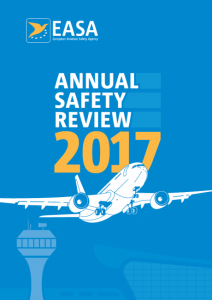




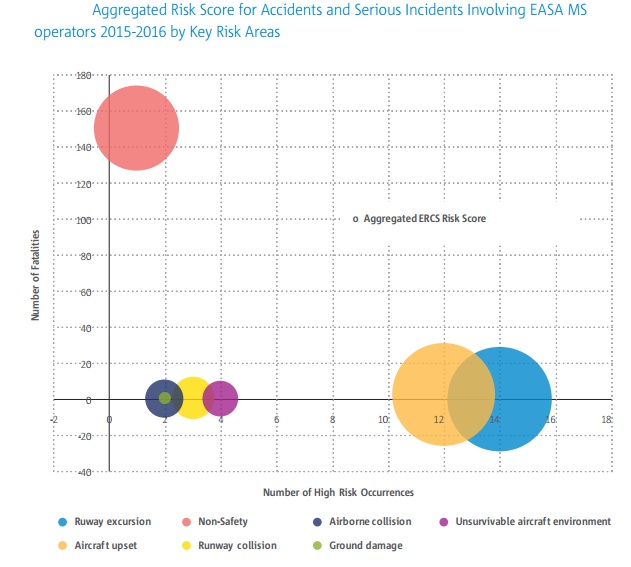
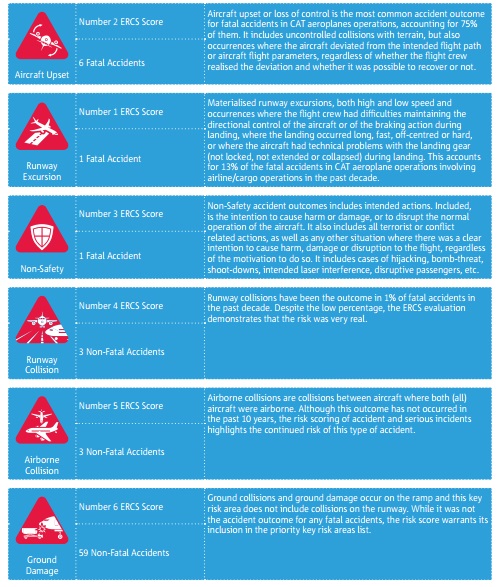
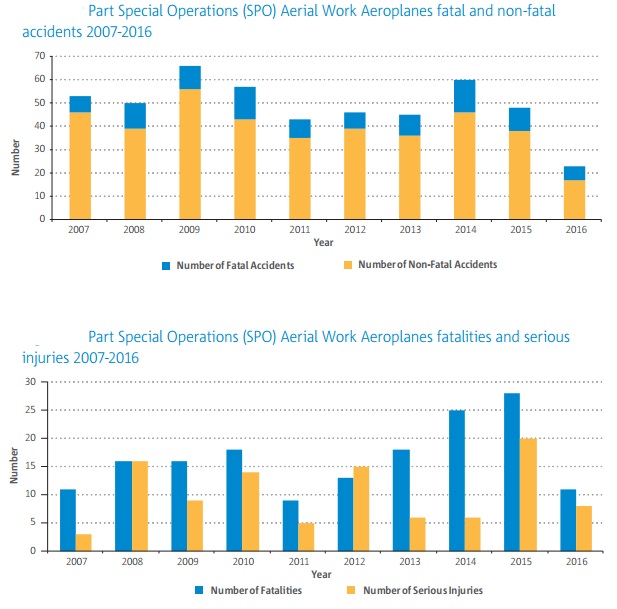



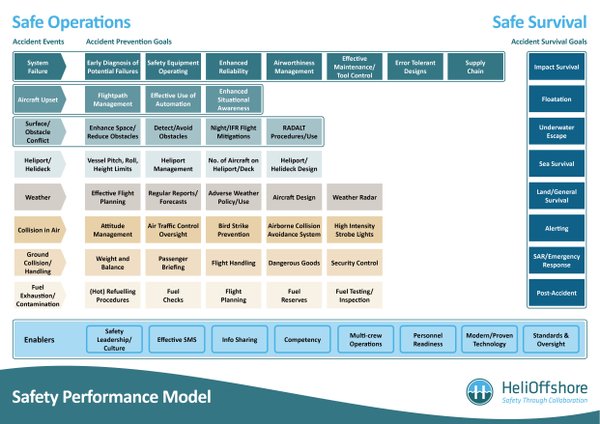
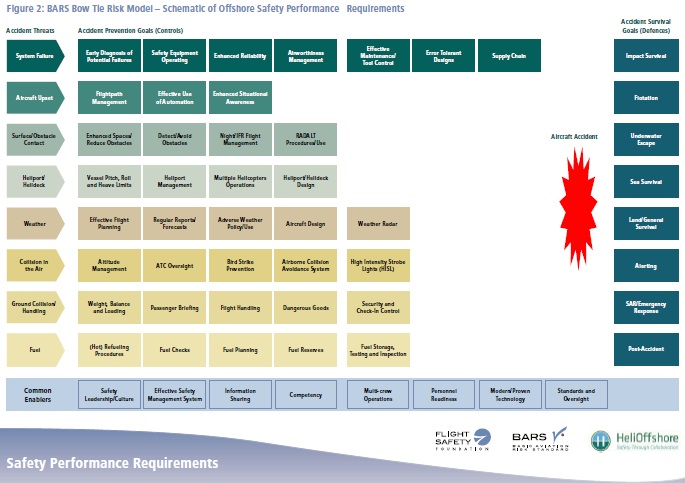



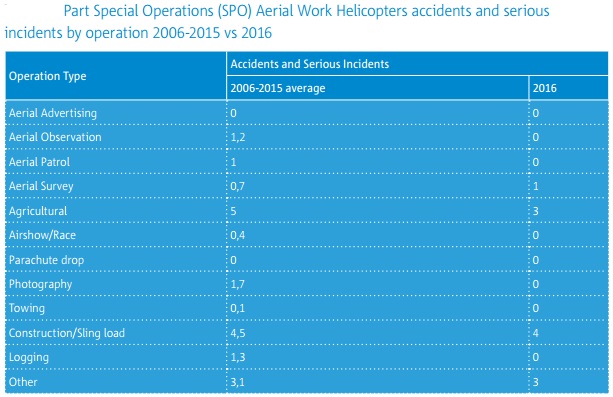
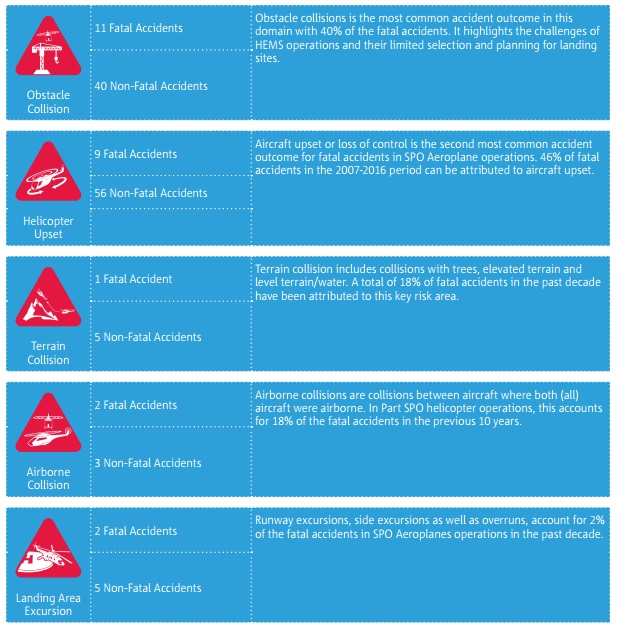
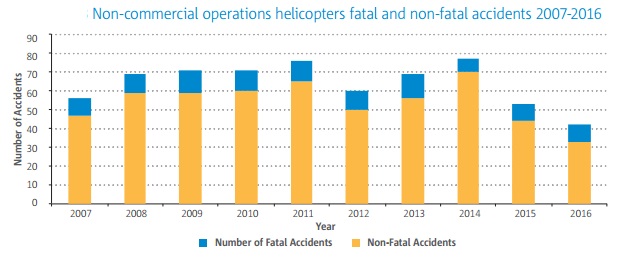



Recent Comments